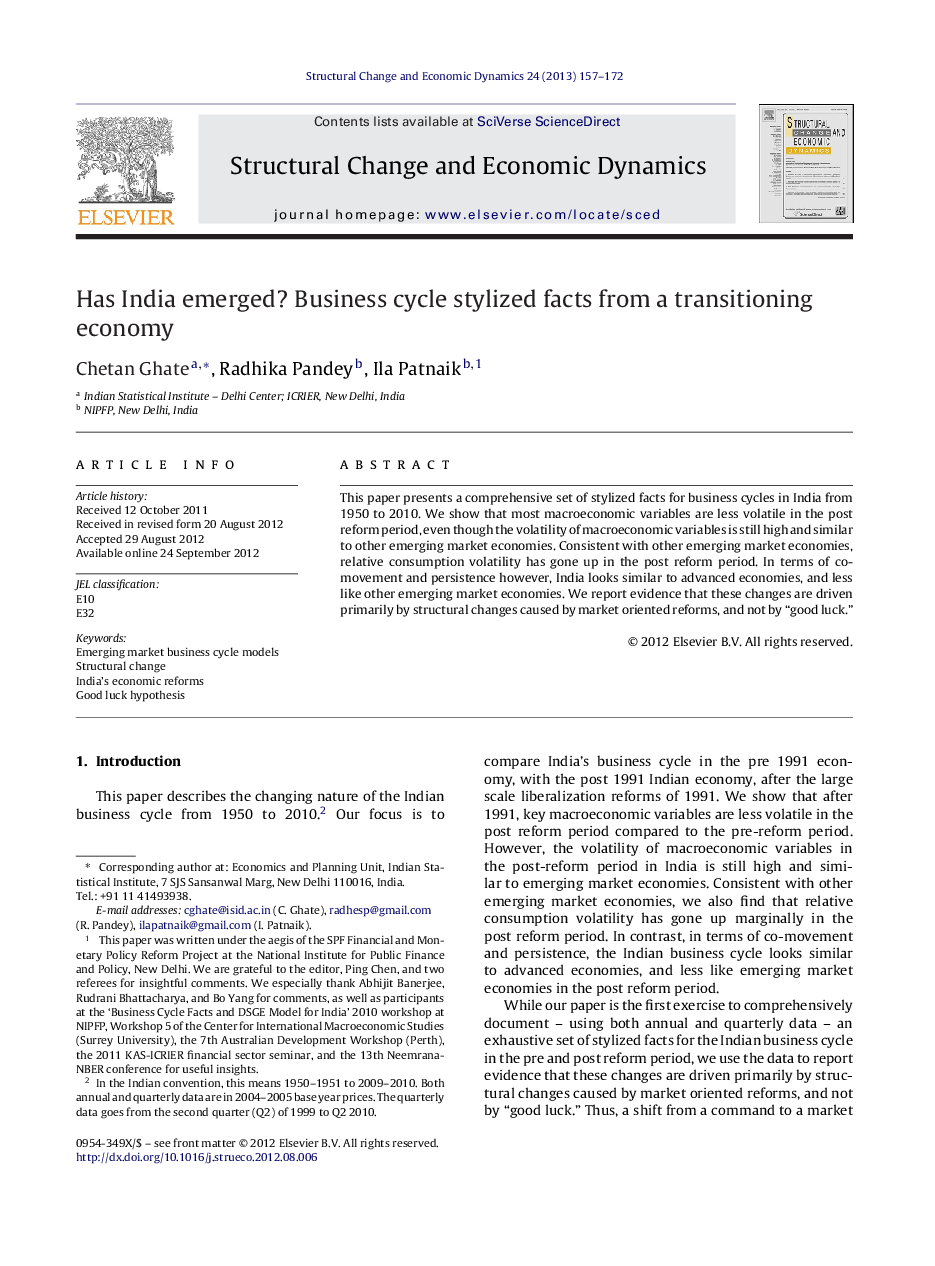| Article ID | Journal | Published Year | Pages | File Type |
|---|---|---|---|---|
| 988606 | Structural Change and Economic Dynamics | 2013 | 16 Pages |
This paper presents a comprehensive set of stylized facts for business cycles in India from 1950 to 2010. We show that most macroeconomic variables are less volatile in the post reform period, even though the volatility of macroeconomic variables is still high and similar to other emerging market economies. Consistent with other emerging market economies, relative consumption volatility has gone up in the post reform period. In terms of co-movement and persistence however, India looks similar to advanced economies, and less like other emerging market economies. We report evidence that these changes are driven primarily by structural changes caused by market oriented reforms, and not by “good luck.”
► This paper constructs a set of business cycle stylized facts for the Indian economy from 1950 to 2010. ► We compare the pre (1991) reform period with the post (1991) reform period. ► We find that in the post reform period, the volatility of several key macroeconomic variables has fallen. ► We argue that these and other changes in the Indian business cycle are driven primarily by structural changes caused by liberalization policy, and not by “good luck.” ► We relate India's experience with other Asian, emerging, and advanced economies.
